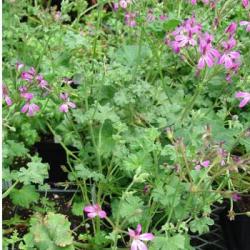Your search for Plants begining with the letter S returned 136 items.
A | B | C | D | E | F | G | H | I | J | K | L | M | N | O | P | Q | R | S | T | U | V | W | X | Y | Z
Displaying items 31 thru 45
Sage, Woodland.
Salvia nemorosa 'Snow Hill'. Description not available at this timeSage, Woodland.
Salvia xsylvestris 'May Night'. Description not available at this timeSalvia.
Salvia 'Wendy's Wish'.Salvia.
Salvia sp. 'Otahal'. Perennial. Hardy to at Least 10°F. An apparent hybrid between S. farinacea and S.azurea. Grey-green foliage is a perfect backdrop for the amazing flowers. The prominent silver-white calyces and blue-violet corollas give the impression of bi-color blooms. Plants grow to about 2 feet tall. Hummingbirds seem to like it as well.Salvia
'Rockin’ Fucshia'. Description not available at this timeSalvia
'Windwalker Royal Red'.Santolina, Gray.
Santolina chamaecyparissus. Santolina is sometimes called lavender cotton because of its silver-gray foliage. It is one of a class of small shrubs used to edge herb gardens and from which knot gardens are made. When paired with germander's deep green foliage a stunning contrast is created. Historically, santolina was used medicinally and as a moth repellent. Mature plants may reach 2 feet tall.Santolina, Green.
Santolina pinnata. Historically, santolina was used medicinally and as a moth repellent. Mature plants with their dainty, yellow flowers may reach 2 feet tall and may be as wide, if plants are not pruned regularly. Good edging plant, highly aromatic. Flower and foliage may be dried.Savory, Summer.
Satureja hortensis. Summer savory is a bushy annual that grows best with regular use. Cutting stems frequently during the summer will keep the plant vegetative and useful. Known as the bean herb because of the way in which it dresses up the common legume, savory may be substituted for sage in poultry and oregano in most things.Last Seed Source: www.johnnyseeds.com
Savory, Winter.
Satureja montana. Perennial. Height 18 to 24 inches tall and nearly as wide. Savory may be substituted for sage in poultry and oregano in most things. The plant can become woody and sprawling if left unpruned; it is wise to start the spring by removing the top one-third to one-half of each stem to encourage new growth and keep the plant from sprawling.Last Seed Source: www.johnnyseeds.com

